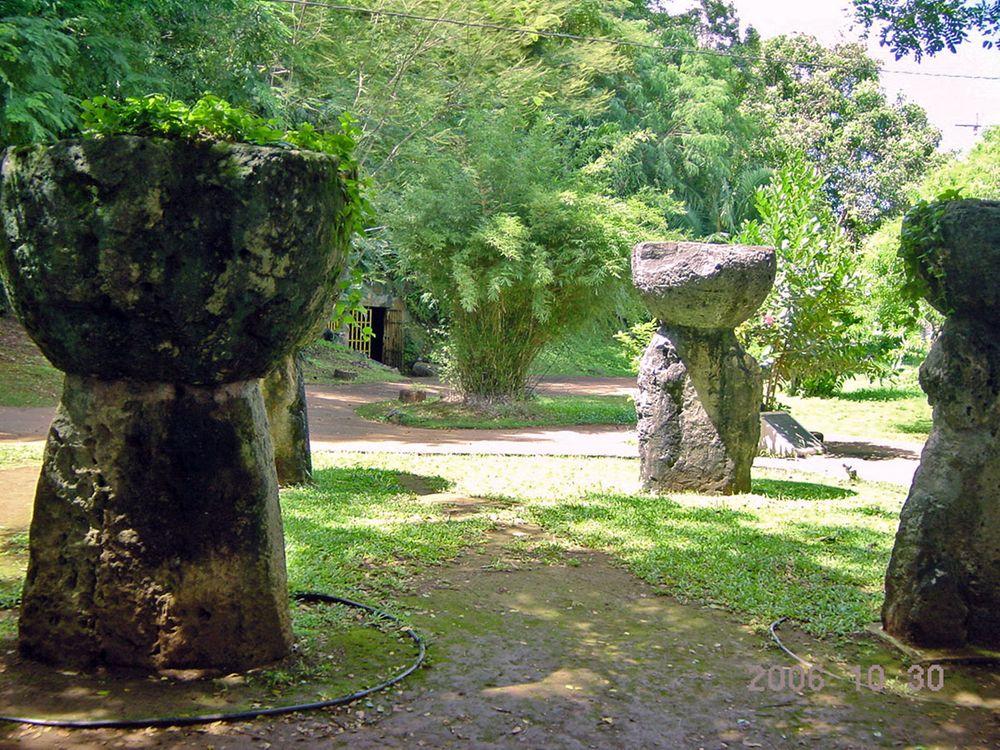World 🢖 Australia and Oceania 🢖 Micronesia 🢖 Guam
Megaliths 🢔 Archaeological wonders 🢔 Categories of wonders
Wonder
Latte Stone Park, Guam
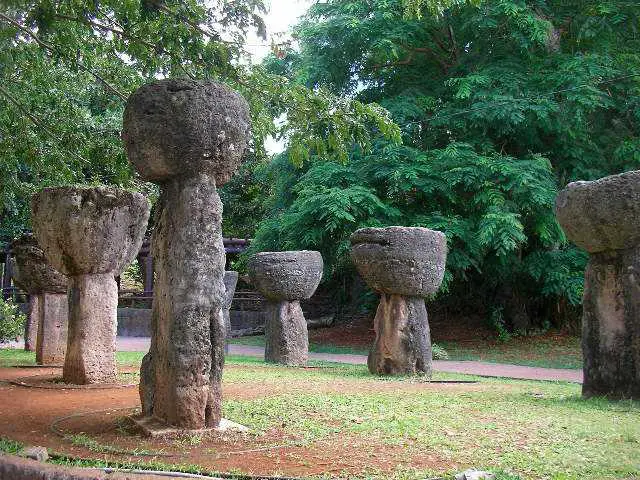
 In short
In short
Mariana Islands have unique kind of megalithic monuments – latte stones. Most likely the most visited site with true latte stones is Latte Stone Park in the center of Hagåtña, where are located eight of these megaliths.
 42.8%
42.8%
GPS coordinates
Location, address
Alternate name
Age
Culture
Map of the site
If you see this after your page is loaded completely, leafletJS files are missing.
 In detail
In detail
Relocated stones
Latte Stone Park is not the original location of these stones. Initially, the stones were located in the southern part of Guam, near the Fena Reservoir. Here was located the ancient Me’pu village: there were preserved 12 such megaliths in two rows. Army of United States planned to build a military base here and the stones were relocated to Hagåtña in 1955 – 1956.
Megaliths of Chamorro people
People are living in Guam and the other Mariana Islands for some 4000 years. These people most likely came here in several waves, with occasional settlers joining the local inhabitants coming from time to time and forming the handsome Chamorro people.
It is considered that around 800 – 900 AD such newcomers introduced the tradition of latte stone to Chamorro culture. Latte stone structures were built until the 16th century, with the last ones built even in the 18th century. Since then latte stones have been left decaying.
Halagi and tåsa
Latte stones consist of two parts – halagi and tåsa.
Halagi is an upright stone, which is narrowing upwards. In most cases, halagi is hewn from coral limestone in special stone quarries, which might be located miles away from the building site.
The largest halagi were mined in a stone quarry in Rota Island (Northern Mariana Islands), where 7.6 m tall stone columns have been left lying. Here the largest shafts weigh 34 tons. The stones most likely were mined by BURNING the limestone and removing the burnt lime.
Larger halagi could be made also from sandstone and even hard basalt.
Tåsa is capstone, placed on the top of halagi.
Tåsa has hemispheric form, with a flat side facing upwards. It is made of naturally rounded coral heads, collected in the nearby reefs. Some specialists consider that the rounded tåsa prevented the rats from climbing up the stone pillar.
The largest capstones may weigh up to 22 tons (also in Rota Latte Stones Quarry). It is not an easy task to rise and place such stone blocks on the top of upright stones.
Such megaliths are unique. Nevertheless, similar wooden constructions are known in Ifugao land in the Philippines, something similar is depicted also in the carvings found in the Borobudur shrine (Indonesia, Java).
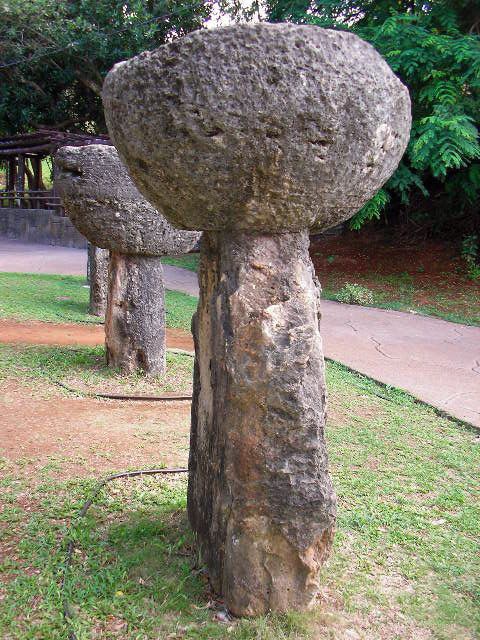
Foundations of meeting houses
Latte stones are 0.6 – 5 m tall. These columns usually are arranged in two straight rows parallel to the sea coast, with 4 – 10 latte stones in each row. The largest arrangement with 20 latte stones in total was found in southern Guam, east of Fena Reservoir. Now a military base is built here.
There is noticed a general principle – the more latte stones are in a structure, the higher each of them is.
Thus the latte stones form a rectangular area. Although there are some doubts about this, many researchers consider that these megaliths served as a foundation for special wooden houses.
Written accounts from the 16th – 17th century describe such houses standing on the top of upright stones. These were important structures – meeting houses.
In such houses were gathered youngsters and they were taught the art of seafaring. Here were built ocean-going boats – proas and they were stored under the meeting houses.
It seems that in every village there was at least one latte structure. Villages most likely fell in construction frenzy and competed – who will have the most impressive latte stone structure.
Spirits of Chamorro ancestors
The deceased villagers were buried next to latte stones, thus strengthening the bond between the ancestors of village families, the living people, and their homes.
The deceased were buried with their heads inland.
Nowadays latte stones serve as a symbol of Chamorro identity. Unfortunately, many latte stones are removed from their original locations – recklessly destroyed or used for landscaping of private gardens.
According to local legends in latte stone sites one can meet taotaomoa – the spirits of Chamorro ancestors. People try to avoid these sites and have much respect for these sites.
The sites of latte stones near the coast differ from the ones inland. Coastal latte stones were based in a cultural layer with signs of habitation and human burials near the stones.
Inland latte stone sites lack this cultural layer and might have been abandoned soon after their construction or used only for some ritual practices.
References
- From the Ancient Past: The Latte Stones of Guam, ns.gov.gu. Accessed 27.10.11.
 Linked articles
Linked articles
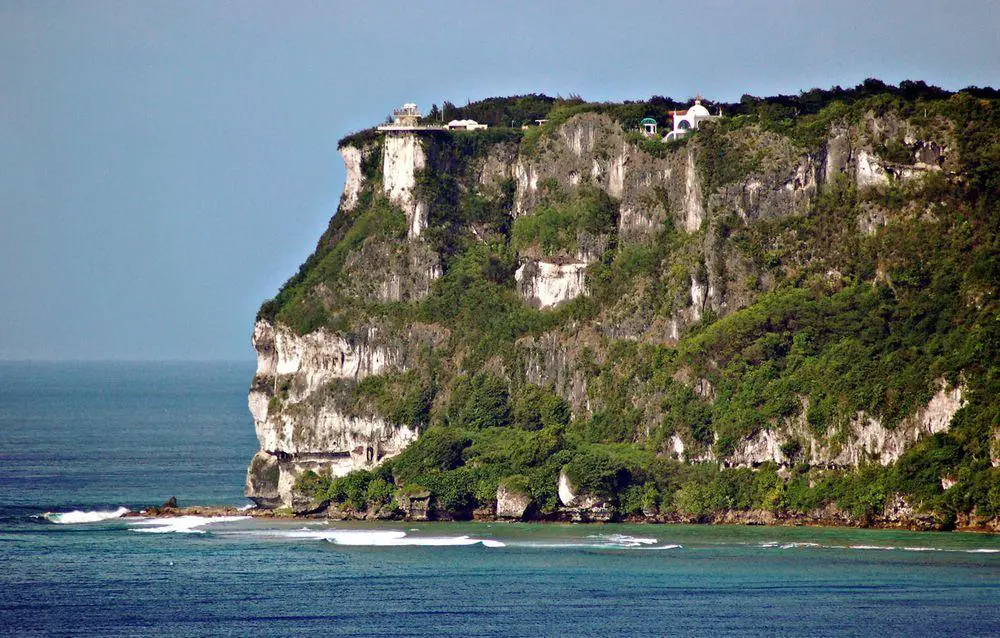
Wonders of Guam
Guam – the largest island in Micronesia – is 541,3 km2 large. The landscape of this island has been modified to a large extent by US military bases and multiple settlements but nonetheless, there have been preserved interesting natural and archaeological landmarks.
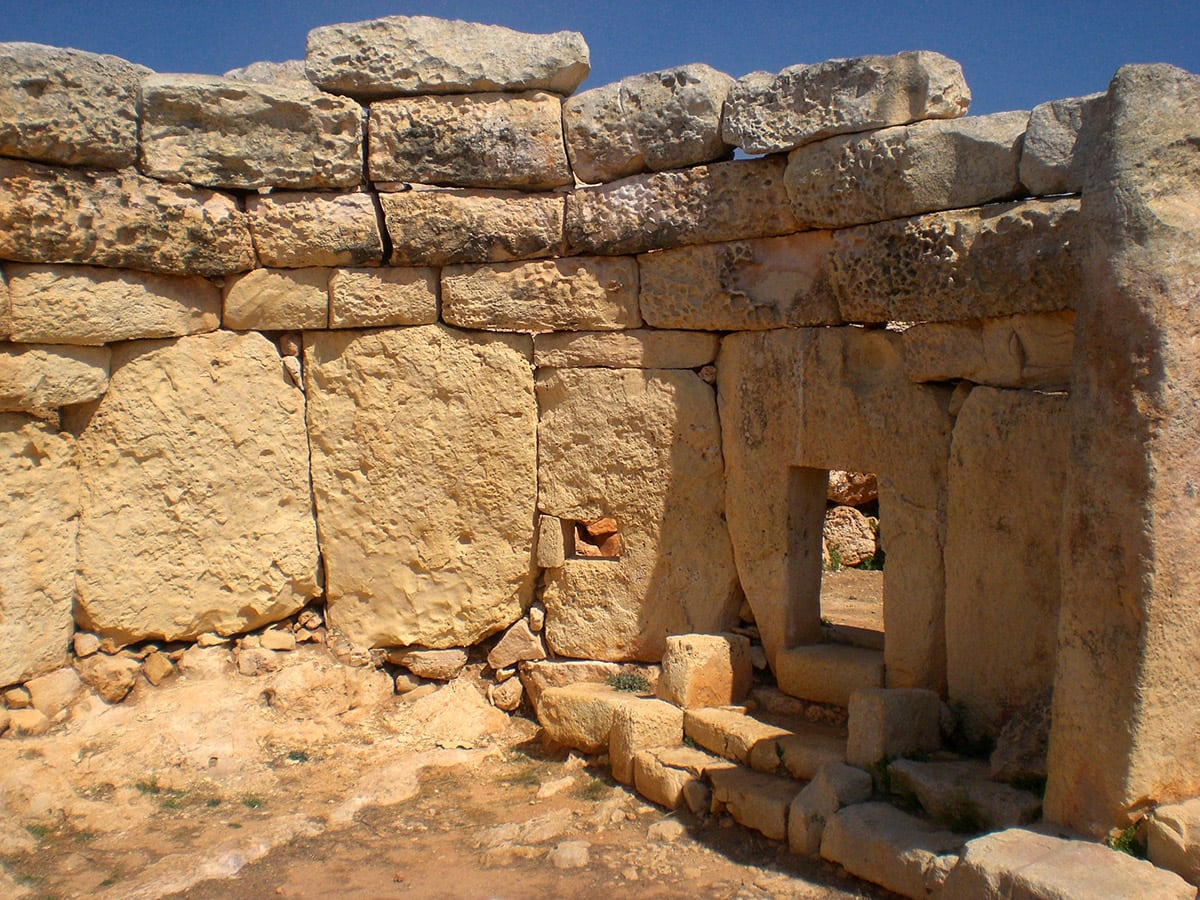
Megaliths
One of the most fascinating groups of archaeological monuments are prehistoric structures made of stones – megaliths. Through the ages, people have loved to strain their minds to find a sensible explanation for the many riddles posed by megaliths.
Even today, we can admit with some pleasure, there are thousands of mysteries left for us.
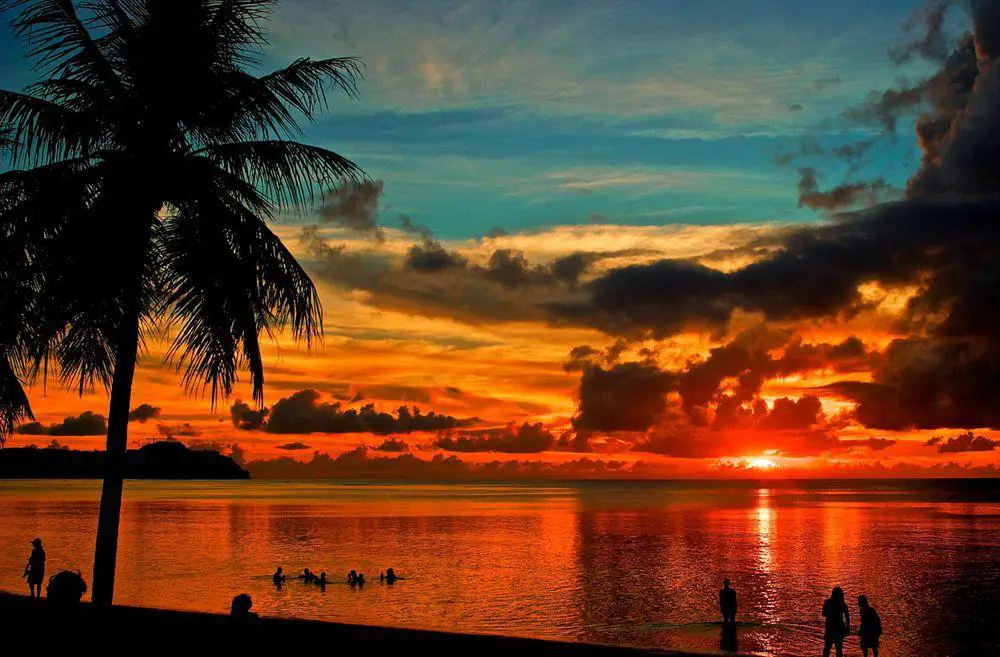
Wonders of Micronesia
Micronesia consists of a huge number of scattered, small islands. Many are low-lying atolls, but several islands offer true mountain scenery and are covered with rainforests. In the Northern Mariana Islands are located several exotic volcanoes which are covered with lush, primeval forests.
 Recommended books
Recommended books
The Archaeology of Micronesia
Drawing on a wide range of archaeological, anthropological, and historical sources, Paul Rainbird surveys the development of Micronesia, from the earliest process of human colonization, within the broader context of Pacific Island studies. Addressing contemporary debates around processes of colonization, social organization, environmental change, and the interpretation of material culture, this book will be essential reading for any scholar with an interest in the archaeology of the Pacific.
Prehistoric Architecture in Micronesia
In the many centuries preceding Western contact, a richly diverse and innovative architectural tradition reached maturity in the western Pacific. Prehistoric Architecture in Micronesia, the first modern study of this remarkable work, reveals that there is no such thing as primitive architecture but only primitive means.

